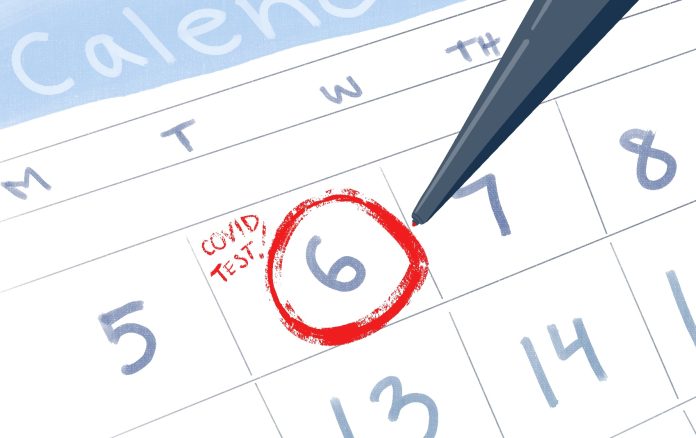Troy Aidan Sambajon
National Beat Reporter
This past quarter, UC Santa Barbara (UCSB) started weekly COVID-19 testing of randomly sampled students. Each week, starting from week three, around 10 percent of the student population has received an email requesting that they take a COVID-19 test. The Bottom Line spoke to Dr. Stuart Feinstein, UCSB’s COVID-19 response team coordinator, to learn more about this new program and how it keeps students safe from any potential outbreaks.
What are the goals of this new weekly testing program?
“The goal of the new random testing program is to provide us with real time data on a weekly basis of the amount of COVID-19 in our campus community. This sort of surveying of a population is a very common epidemiological strategy. This will inform us of whether COVID-19 in our campus community is increasing, decreasing, or staying the same with the passage of time. This will in turn help us make decisions as to altering our procedures and requirements or staying the course, and is critical to our ability to safely operate the campus in person. Additionally, it should be noted that the campus met with Associated Students (A.S.) and Graduate Student Association (GSA) representatives prior to initiating the program, and both [organizations] were fully supportive.”
How are students randomly selected?
“Students are randomly selected by a random number generator in the computer software. I should mention that this sort of random testing is also much less of an imposition upon our students compared to the mandatory testing (every other week) for all students on some campuses. We think that this random testing, which is also being used at some other UC campuses, will give us the information we need without requiring as much of our people.”
How effective do you think this new program will be?
“For this program to be truly rigorous, it requires that there be good participation on the part of the people randomly selected for testing each week. Otherwise, bias can be introduced and that could begin to undermine the usefulness of the data.”
Should students expect more programs like this in the future?
“There are no new programs in the pipeline at the moment, but we always try to make modifications that improve our efforts in useful and constructive ways. We all have to remain flexible and able to make changes as the situation changes and as we learn more and more about this virus.
“Since the start of fall quarter, more than 27,000 tests have been conducted. This weekly testing program has proven successful in assessing campus safety with an accurate positive test rate of less than one percent. Thanks to the new COVID-19 Dashboard, students have full access to the university’s testing and case counts. Accessibility and transparency in COVID-19 testing ensures campus safety and maintains trust within the system.
“The bottom line is that the COVID-19 infection rate is very unlikely to go to zero anytime soon, but with high vaccination rates and indoor masking, COVID-19 can be largely controlled. The campus is probably the safest place that you can be, because essentially everyone is vaccinated and masked (indoors),” said Dr. Feinstein.
For more information regarding the COVID-19 Dashboard, click here. For more questions regarding this program and other COVID-19 programs on campus, email ucsb-covid19@ucsb.edu.











